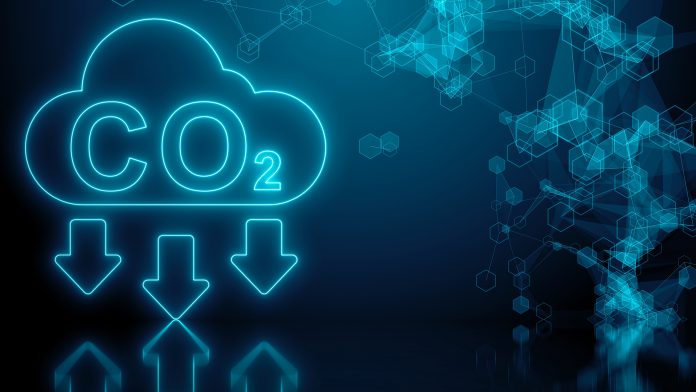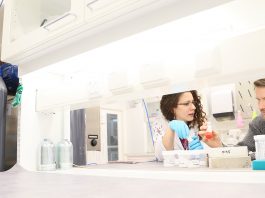Researchers from the National Energy Technology Laboratory and the University of Kentucky have developed a quantum computing algorithm that could identify better compounds for more efficient carbon capture.
Carbon dioxide emissions in 2022 remained at record levels, and show no signs of decreasing. Carbon emissions must be reduced, and carbon dioxide must be removed from the atmosphere for damage to be curbed. Carbon capture can remedy this problem, by pulling carbon dioxide out of the air and storing it permanently to reverse the effects of climate change.
Practical carbon capture technologies are still in the early stages of development. The carbon capture technologies with the most promise involve a class of compounds called amines that chemically bind with carbon dioxide. Efficiency is central to these technologies and finding compounds that are slightly better could lead to the capture of billions of tons of additional carbon dioxide.
To try and improve the efficiency of carbon capture technologies, researchers from the National Energy Technology Laboratory and the University of Kentucky used an algorithm to study amine reactions through quantum computing. Ran on an existing quantum computer, the algorithm can find useful amine compounds for carbon capture more quickly.
The work, ‘Description of reaction and vibrational energetics of CO2–NH3 interaction using quantum computing algorithms,’ is published in the journal AVS Quantum Science.
Amine-based carbon capture
Amine-based carbon capture is a commercially available technology, which uses an amine solvent to remove carbon dioxide from flue gas. Amine is a solvent derived from ammonia.
The technology separates carbon dioxide from the flue gas, which is fed into an absorption column. The solvent is then fed into a desorber column to release the carbon dioxide, which is then captured.
Amine-based technologies are widely used to chemically absorb carbon dioxide, so ensuring that this process is optimised is imperative.
Ensuring the efficiency of the process with quantum computing
To maximise the efficiency of anime-based carbon capture technologies, the researchers studied the ability of amine-based solvents to chemically absorb carbon dioxide with a quantum computing algorithm.

“We are not satisfied with the current amine molecules that we use for this process,” said author Qing Shao.
“We can try to find a new molecule to do it, but if we want to test it using classical computing resources, it will be a very expensive calculation. Our hope is to have a fast algorithm that can screen thousands of new molecules and structures.”
Interactions between every pair of atoms involved need to be accounted for by the computer algorithm. This can be a challenge for traditional computers, as even a simple three-atom molecule like carbon dioxide bonding with the simplest amine, ammonia, which has four atoms, results in hundreds of atomic interactions.
Although quantum computers can excel with this type of problem, they are still a developing technology and are not powerful enough to directly handle these kinds of simulations.
The group’s algorithm can get around this issue
The algorithm developed by the researchers helps quantum computers handle these simulations, allowing the technology to analyse larger molecules and more complex reactions. This is vital for practical applications in fields like carbon capture.
“We are trying to use the current quantum computing technology to solve a practical environmental problem,” said author Yuhua Duan.









